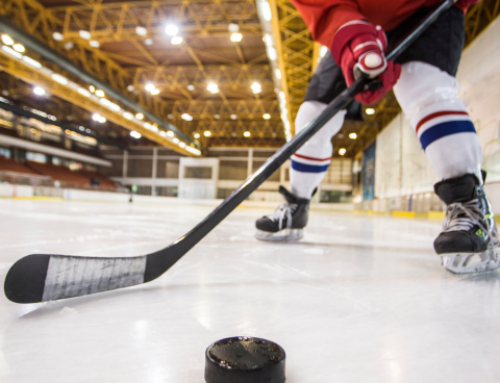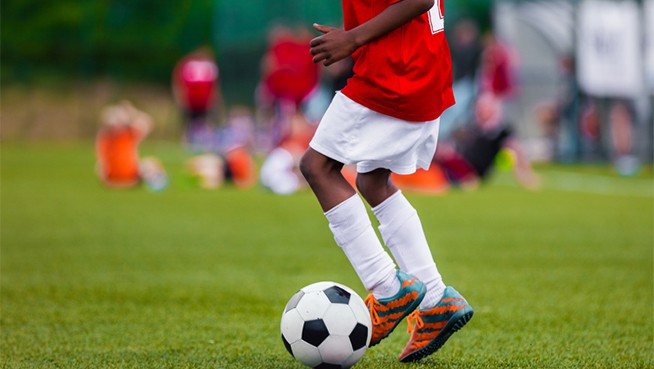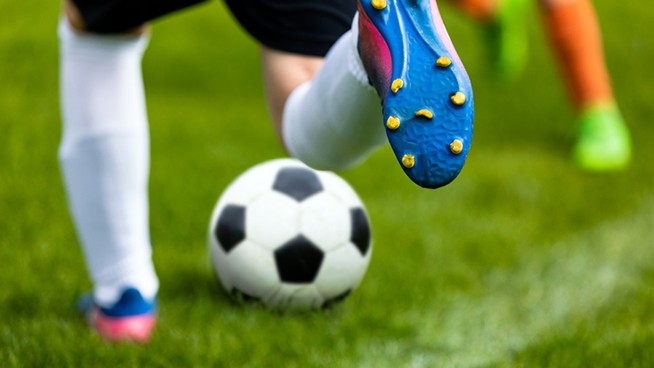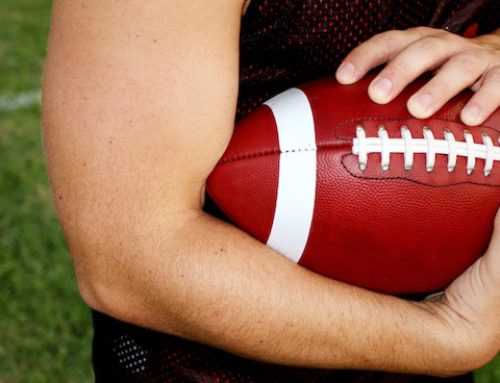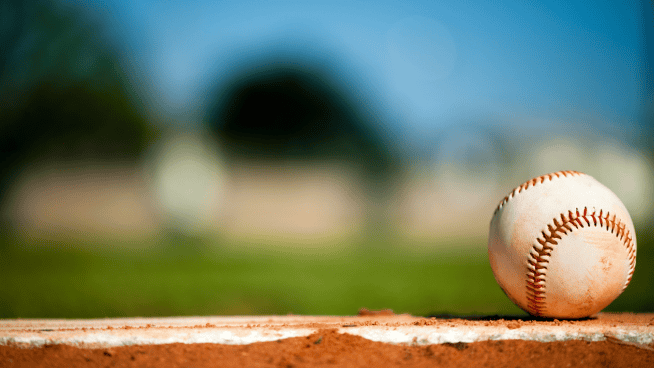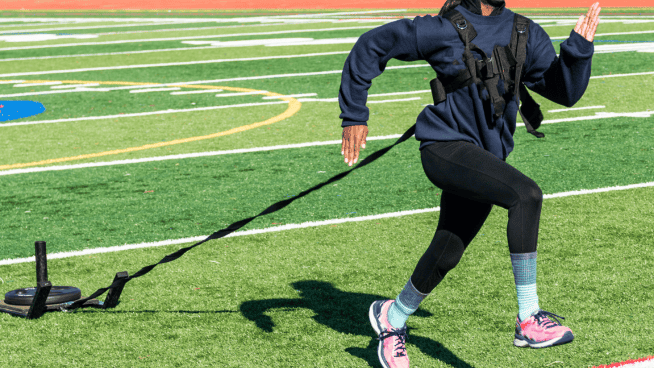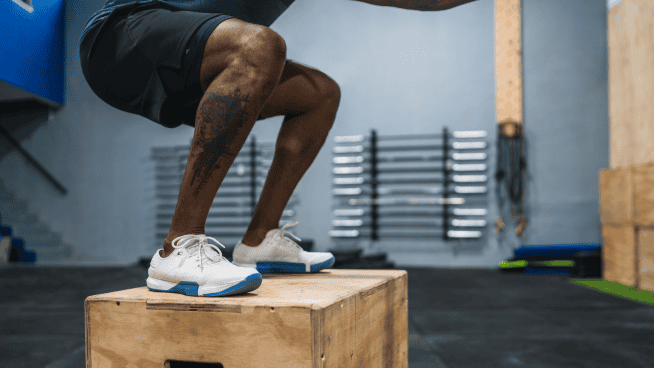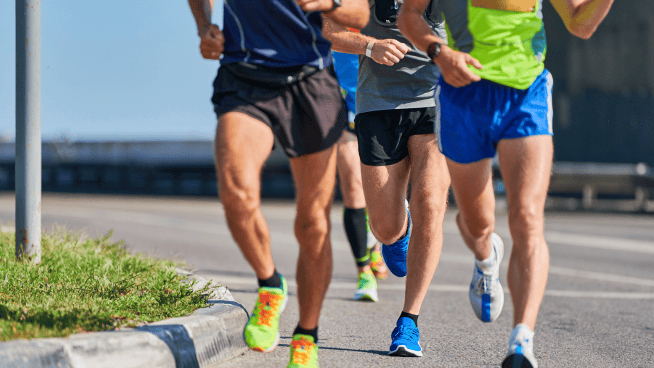Improving your Hockey Shot on the Ice
Athletic power is the ability to exert maximal force as quickly as possible. In ice hockey, rotational power is a prime attribute for any player who wants to have a strong shot.
How we train to improve an athlete’s power has changed over the years. Olympic lifting has been proven to develop power and has been around forever, but is it the best thing for all athletes and all stages of their development? What are the goals of the training program, and is the program devised to meet those goals?
RELATED: 3 Ways to Build Upper-Body Strength for Hockey
Choose the right exercises
A big problem I find today in sports performance training is that coaches see cool-looking exercises that are difficult to perform and just throw them into a program. Does the athlete have the stability and strength to perform the exercise correctly? Does the exercise relate to the sport for which the athlete is trying to improve? These are questions that must be answered prior to adding an exercise to a workout.
Renowned strength coach Mike Boyle says, “The ability to resist or to prevent rotation may in fact be more important than the ability to create it. Clients or athletes must be able to prevent rotation before we should allow them to produce it.” He makes a valid point. Can an athlete control the motion we are asking them to perform?
In my opinion, this is where your program should begin. I suggest using exercises such as Planks while lifting an arm or leg, Chops with either a medicine ball or a band or pulley system. These exercises create rotational force, and you must maintain a proper and stable position.
Once you can show rotational stability in a neutral position, you must be able to perform exercises with trunk rotation under control. This not only includes core stability, but also stability provided by the hips and legs.
Rotational force is produced from the ground up—from the feet through the trunk and out through the hands. Think of someone whipping a towel. The force begins where the person holds the towel and is transmitted through the length of the towel until it snaps at the end (occasionally stinging a friend).
Watch a hockey player with a great slap shot and see how he begins the motion with his legs and ends with the puck exploding off the stick. The most powerful athletes are not always the strongest, but those who can create the most power through an efficient and stable motion.
Tons of exercises are designed to resist and produce rotational force. The one I use the most is just a plain rotational Medicine Ball Toss off a wall. It is simple and functional, and most athletes can relate it to their sport.
RELATED: 3 Full-Body Combo Workouts To Build Hockey Muscle
Load and Explode
I use the “Load and Explode” method:
- Rotate your trunk so your chest turns as you get your back hip over your foot, “loading” your back leg.
- Push off your back leg toward your front leg, initiating your trunk rotation and throwing the ball off the wall.
- Now that you’ve created the force to throw the ball, you must be able to control and decelerate the ball as it bounces off the wall and comes back toward you (sometimes quicker than you expect.)
- Control the catch, rotate, shift back to the “load” position and pause.
Why pause? This exercise, as simple as it looks, is quite complex. By breaking it down and coming to a complete stop, you are reminded to load and explode, not just fire through as many reps as possible. Think of how it relates to sports. Does a hockey player load and explode to shoot a slap shot, or does he take 10 slap shots as quickly as possible during a game? This is the time to work on efficiently creating power. It is a skill that must be practiced, just like shooting a puck on the ice.
Resistance
Now that we have some core stability and an exercise to create and control rotational power, we have to choose the right resistance to use in the exercise.
Gray Cook, author of Athletic Body in Balance, has talked about this in depth. I used to think that if we want to create power, we need to use heavy resistance. Look at the Olympic power lifters; they lift tons of weight. Cook reminds us to look at the definition of power.
One word needs to be emphasized: quickly.
The larger the mass, the slower the athlete can move it. Evolution! More isn’t always better. Pick a medicine ball you can fully control and throw quickly. Ask any goalie how hard it is to make a save when the shooter gets a shot off rapidly. You must use a resistance that allows for maximal speed. This is not to say that more advanced athletes cannot mix in training days where they use heavier resistance to build strength, but if the focus is on power, the resistance must allow for maximal speed.
Power development should be involved in a well-rounded sports performance program, as it plays such an important role in athletics. To gain maximal performance and prevent injuries, each power program should have goals that are specific to a sport and developed with specific steps to improve your skills and athletic development.
Athletic movements are skills that are developed over time and through repetition. Using proper progression and mechanics will vastly improve your efficiency to develop rotational power and shoot the puck at a higher velocity with less effort.
RELATED: Hockey Strength Training: 5 Areas of Focus and a Sample Workout
[cf]skyword_tracking_tag[/cf]RECOMMENDED FOR YOU
MOST POPULAR
Improving your Hockey Shot on the Ice
Athletic power is the ability to exert maximal force as quickly as possible. In ice hockey, rotational power is a prime attribute for any player who wants to have a strong shot.
How we train to improve an athlete’s power has changed over the years. Olympic lifting has been proven to develop power and has been around forever, but is it the best thing for all athletes and all stages of their development? What are the goals of the training program, and is the program devised to meet those goals?
RELATED: 3 Ways to Build Upper-Body Strength for Hockey
Choose the right exercises
A big problem I find today in sports performance training is that coaches see cool-looking exercises that are difficult to perform and just throw them into a program. Does the athlete have the stability and strength to perform the exercise correctly? Does the exercise relate to the sport for which the athlete is trying to improve? These are questions that must be answered prior to adding an exercise to a workout.
Renowned strength coach Mike Boyle says, “The ability to resist or to prevent rotation may in fact be more important than the ability to create it. Clients or athletes must be able to prevent rotation before we should allow them to produce it.” He makes a valid point. Can an athlete control the motion we are asking them to perform?
In my opinion, this is where your program should begin. I suggest using exercises such as Planks while lifting an arm or leg, Chops with either a medicine ball or a band or pulley system. These exercises create rotational force, and you must maintain a proper and stable position.
Once you can show rotational stability in a neutral position, you must be able to perform exercises with trunk rotation under control. This not only includes core stability, but also stability provided by the hips and legs.
Rotational force is produced from the ground up—from the feet through the trunk and out through the hands. Think of someone whipping a towel. The force begins where the person holds the towel and is transmitted through the length of the towel until it snaps at the end (occasionally stinging a friend).
Watch a hockey player with a great slap shot and see how he begins the motion with his legs and ends with the puck exploding off the stick. The most powerful athletes are not always the strongest, but those who can create the most power through an efficient and stable motion.
Tons of exercises are designed to resist and produce rotational force. The one I use the most is just a plain rotational Medicine Ball Toss off a wall. It is simple and functional, and most athletes can relate it to their sport.
RELATED: 3 Full-Body Combo Workouts To Build Hockey Muscle
Load and Explode
I use the “Load and Explode” method:
- Rotate your trunk so your chest turns as you get your back hip over your foot, “loading” your back leg.
- Push off your back leg toward your front leg, initiating your trunk rotation and throwing the ball off the wall.
- Now that you’ve created the force to throw the ball, you must be able to control and decelerate the ball as it bounces off the wall and comes back toward you (sometimes quicker than you expect.)
- Control the catch, rotate, shift back to the “load” position and pause.
Why pause? This exercise, as simple as it looks, is quite complex. By breaking it down and coming to a complete stop, you are reminded to load and explode, not just fire through as many reps as possible. Think of how it relates to sports. Does a hockey player load and explode to shoot a slap shot, or does he take 10 slap shots as quickly as possible during a game? This is the time to work on efficiently creating power. It is a skill that must be practiced, just like shooting a puck on the ice.
Resistance
Now that we have some core stability and an exercise to create and control rotational power, we have to choose the right resistance to use in the exercise.
Gray Cook, author of Athletic Body in Balance, has talked about this in depth. I used to think that if we want to create power, we need to use heavy resistance. Look at the Olympic power lifters; they lift tons of weight. Cook reminds us to look at the definition of power.
One word needs to be emphasized: quickly.
The larger the mass, the slower the athlete can move it. Evolution! More isn’t always better. Pick a medicine ball you can fully control and throw quickly. Ask any goalie how hard it is to make a save when the shooter gets a shot off rapidly. You must use a resistance that allows for maximal speed. This is not to say that more advanced athletes cannot mix in training days where they use heavier resistance to build strength, but if the focus is on power, the resistance must allow for maximal speed.
Power development should be involved in a well-rounded sports performance program, as it plays such an important role in athletics. To gain maximal performance and prevent injuries, each power program should have goals that are specific to a sport and developed with specific steps to improve your skills and athletic development.
Athletic movements are skills that are developed over time and through repetition. Using proper progression and mechanics will vastly improve your efficiency to develop rotational power and shoot the puck at a higher velocity with less effort.
RELATED: Hockey Strength Training: 5 Areas of Focus and a Sample Workout
[cf]skyword_tracking_tag[/cf]
